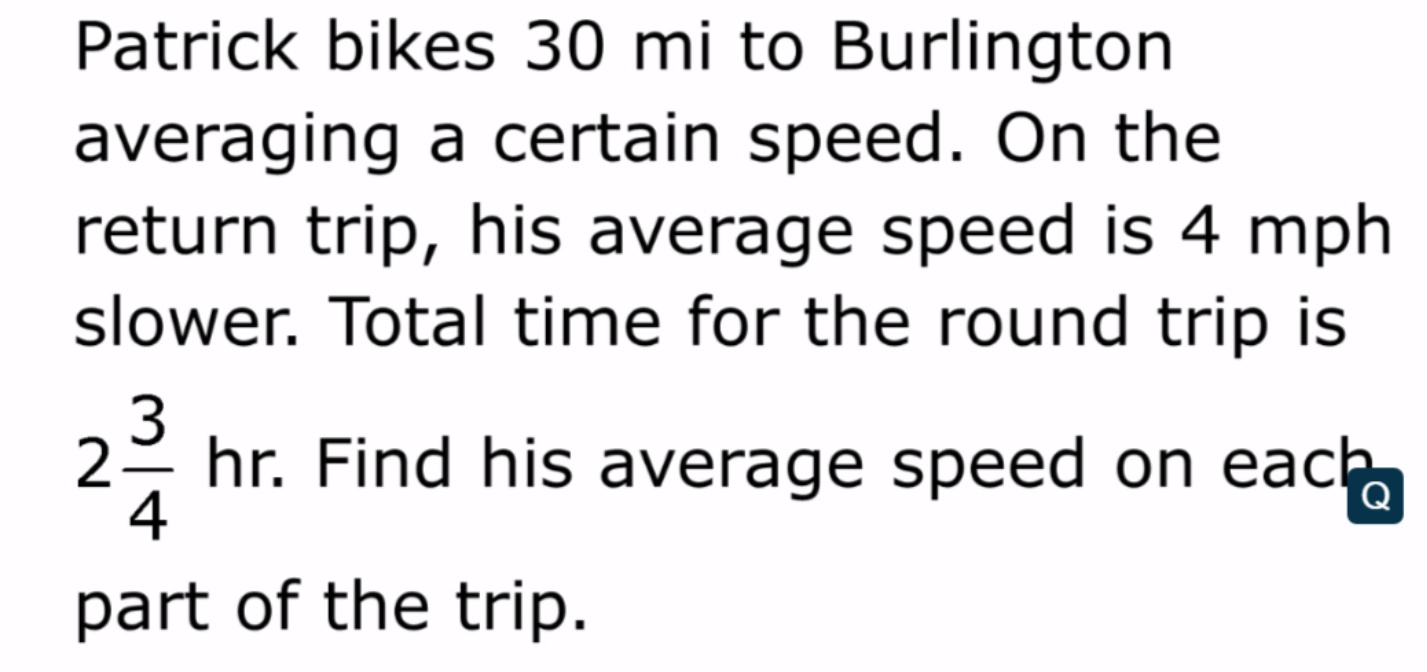I cannot get this right. The fraction (total time) is messing me up. Can you provide a step-by-step for this one?

2 Answers
He drives the first leg at an average of 24 mph (taking 1.25 h), and the return trip at 20 mph (taking 1.5 h)
Explanation:
We use
to express this distance, and
Then
From the problem, we know that
Using this in the second equation
Expanding this, we get
But we know
and since
or
We solve with the quadratic formula
Which means
(1.25 h on the trip out, 1.5 h on the return)
Patrick travels at an average speed of
Explanation:
We know that
In this case,
Let
Since the total time of the round trip is
We have two equations modeling the speeds:
#r_1 = 30 / t_1# and#r_2 = 30 / t_2#
Let's get the variables to match in both equations.
#t_1 = 30/r_1# and#t_2 = 30/r_2#
#color(green)(t_1 + t_2) = 30/r_1 + 30/r_2#
#color(green)2.75 = 30/r_1 + 30/color(blue)(r_2)#
#2.75 = 30/r_1 + 30/(color(blue)(r_1 - 4))#
Now, solve for
#2.75 - 30/r_1 = 30/(r_1 - 4)#
#(2.75r_1) / r_1 - 30/r_1 = 30/(r_1 - 4)#
#(2.75r_1 - 30)/r_1 = 30/(r_1 - 4)#
#(2.75r_1 - 30)(r_1 -4) = 30r_1#
#2.75r_1^(color(white)x2) - 11r_1 - 30r_1 + 120 = 30r_1#
#2.75r_1^(color(white)x2) - 71r_1 + 120 = 0#
We can use the Quadratic Formula to find
#r_1 = (-b +- sqrt(b^2 - 4ac))/(2a)#
#r_1 = (71 +- sqrt ((-71)^2 - 4(2.75)(120))) / (2(2.75))#
#r_1 = 24# or#1.bar81#
We can throw out


